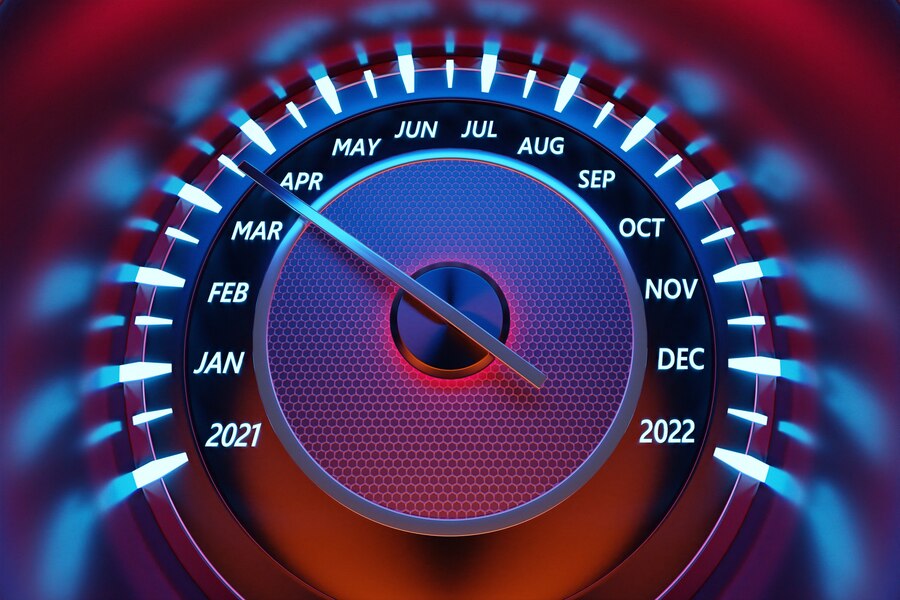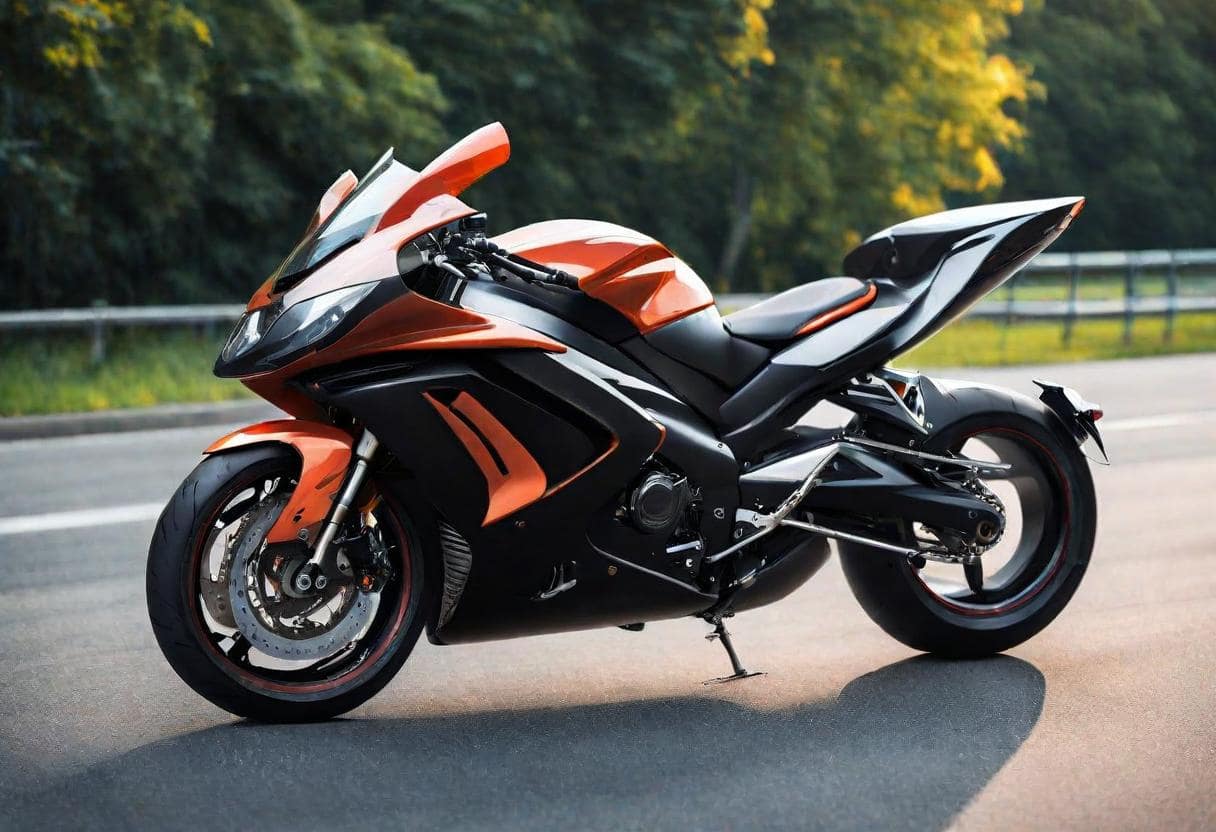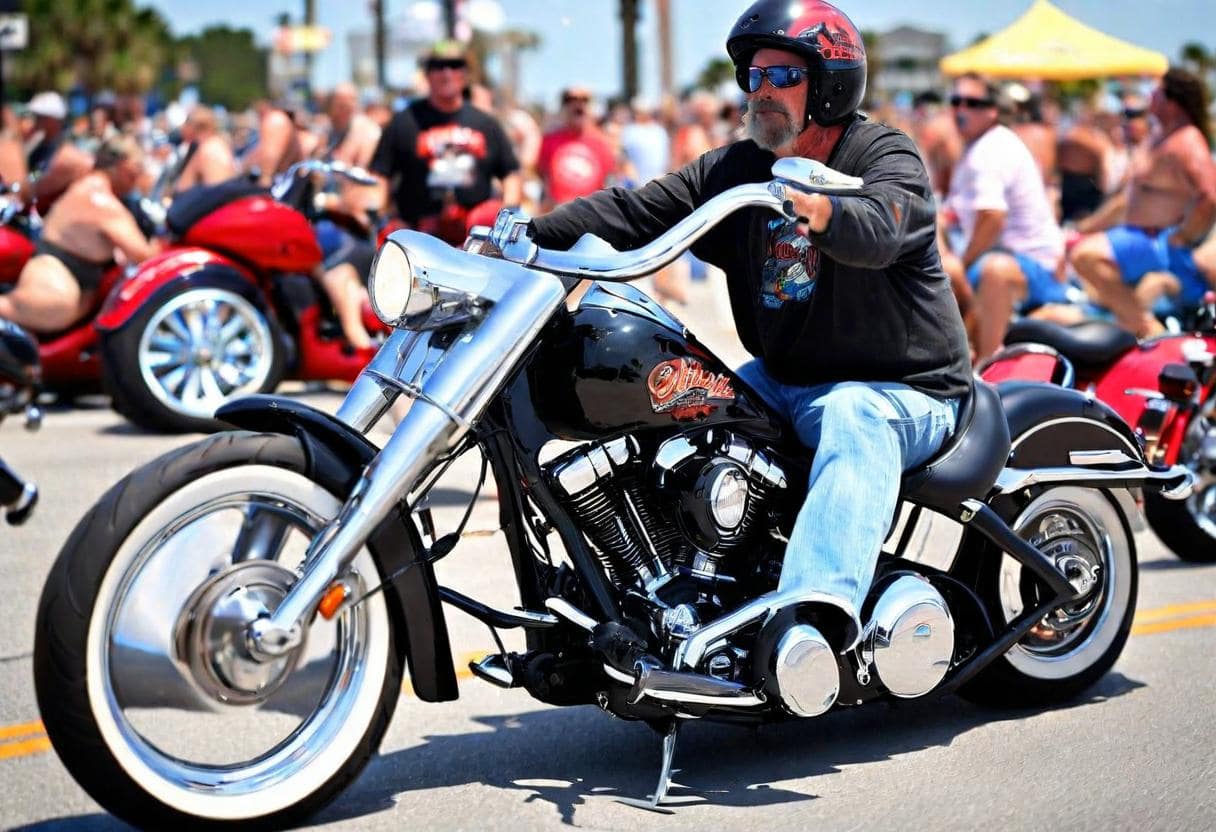Motorcycle riding can be an exhilarating experience, but understanding how weather conditions affect your ride is crucial for safety. One often overlooked aspect is windchill. Knowing how windchill impacts your ride can help you stay warm and safe, especially in colder weather. In this comprehensive guide, we’ll delve into the intricacies of windchill chart for motorcycles, helping you understand their significance and how to navigate them effectively.
What is Windchill and How Does it Affect Motorcyclists?
Windchill is the drop in air temperature felt by the body on exposed skin due to airflow. This phenomenon is particularly relevant for motorcyclists, as the bike’s speed can significantly increase the wind’s cooling effect.
The Scientific Basis of Windchill
Windchill is calculated based on the rate at which exposed skin loses heat due to wind and cold temperatures. The formula takes into account air temperature and wind speed, giving a more accurate representation of what your body feels compared to the actual air temperature.
The Impact of Windchill on the Human Body
When exposed to windchill, your body loses heat faster than it would in still air. This can lead to hypothermia and frostbite if not properly addressed. For motorcyclists, this rapid heat loss can be dangerous, affecting concentration and reaction times, which are crucial for safe riding.
Why Motorcyclists are Particularly Vulnerable
Motorcyclists face higher wind speeds than pedestrians due to the speed of the bike. This amplified wind speed can drastically lower the perceived temperature, making riders more susceptible to the adverse effects of windchill. Proper gear and preparation are essential to combat these conditions.
Why is a Windchill Chart Essential for Motorcycle Riders?
Understanding the practical applications of a windchill chart can greatly enhance a motorcyclist’s safety and comfort. Let’s delve into why this tool is indispensable for riders.
Benefits of Using a Windchill Chart
- Informed Decision-Making: A windchill chart helps riders make informed decisions about their trips. By knowing the expected windchill, you can dress appropriately and plan stops to warm up, reducing the risk of hypothermia.
- Safety Enhancements: Awareness of windchill conditions can prevent accidents caused by impaired judgment and physical dexterity due to cold. Staying warm maintains reaction times and overall alertness.
- Comfort Optimization: Riding in cold conditions can be uncomfortable. Using a windchill chart helps you understand the best ways to stay comfortable by dressing in layers and using appropriate gear.
Potential Risks of Not Considering Windchill
- Increased Risk of Hypothermia: Ignoring windchill can lead to hypothermia, a dangerous condition where body temperature drops too low.
- Impaired Riding Ability: Cold affects your ability to move and react quickly, increasing the risk of accidents.
- Long-Term Health Issues: Prolonged exposure to cold without proper protection can lead to long-term health issues such as arthritis and respiratory problems.
The Importance of Preparing for Windchill on a Motorcycle
Preparation is key when riding in cold weather. By understanding and utilizing a windchill chart, motorcyclists can ensure their safety and comfort on the road.
- Layering Clothing: Dress in multiple layers to trap heat and provide insulation.
- Windproof Gear: Invest in windproof clothing and accessories to minimize the effects of windchill.
- Regular Breaks: Plan regular stops to warm up and check your physical condition.
- Warm Accessories: Use heated gloves and grips, and consider a heated vest to maintain core body temperature.
How to Read a Windchill Chart for Motorcycles?
Reading a windchill chart might seem daunting at first, but it’s quite simple once you understand the basics. This section will guide you step-by-step on interpreting a windchill chart, providing examples of different temperatures and wind speeds, and explaining the significance of various windchill values.
Step-by-Step Guide on Interpreting a Windchill Chart
A wind chill chart typically has air temperature on one axis and wind speed on the other. The intersection of these values gives you the perceived temperature or windchill factor.
- Find the Air Temperature: Locate the current air temperature on the chart.
It is usually measured in degrees Fahrenheit. - Locate the Wind Speed: Find the current wind speed, typically measured in miles per hour (mph).
- Identify the Intersection: Trace both values until they intersect on the chart. This point represents the windchill temperature.
Examples of Different Temperatures and Wind Speeds
Let’s look at some examples to make it clearer:
- Example 1: If the air temperature is 30°F and the wind speed is 20 mph, the windchill temperature would be around 17°F.
- Example 2: At an air temperature of 10°F with a wind speed of 15 mph, the windchill temperature drops to approximately -7°F.
- Example 3: For an air temperature of 40°F and a wind speed of 30 mph, the windchill temperature would be about 28°F.
The Significance of Various Windchill Values
Understanding the significance of different windchill values helps in planning your ride and dressing appropriately:
- Above Freezing (32°F and above): Generally comfortable but may feel chilly with high wind speeds. Light layers and windproof clothing are recommended.
- Below Freezing (31°F to 0°F): Risk of frostbite increases. Wear multiple layers, insulated gloves, and a balaclava to protect exposed skin.
- Subzero Temperatures (-1°F and below): Extreme caution required. Hypothermia can set in quickly. Use heated gear and limit your exposure to the cold.
What are the Best Practices for Riding in Cold Weather?
Riding in cold weather requires special preparation to ensure your safety and comfort.
Tips on How to Prepare for Cold Weather Riding
- Check the Weather: Be sure to check the weather forecast before setting off. Pay attention to wind speeds and temperatures.
- Plan Your Route: Choose routes with frequent stops where you can warm up. Avoid isolated areas where help might be hard to find.
- Stay Hydrated: Cold weather can be dehydrating. Stay hydrated and alert by drinking plenty of water.
Recommendations for Proper Clothing and Gear to Combat Windchill
Wearing the right gear is crucial to combat windchill and keep you warm.
- Layer Up: Wear multiple layers to trap heat. Start with a moisture-wicking base layer, add an insulating layer, and top it off with a windproof outer layer.
- Heated Gear: Invest in heated gloves, vests, and grips. These can make a significant difference in maintaining your body temperature.
- Windproof Clothing: Use windproof jackets and pants to minimize the cooling effect of the wind. Ensure your gear is waterproof as well.
Safety Measures to Take During Winter Rides
When riding in cold weather, safety must be a priority.
- Visibility: Ensure your bike lights are working properly and use reflective gear to enhance visibility.
- Maintain Your Bike: Cold weather can affect your motorcycle’s performance. Check tire pressure, oil levels, and battery condition before you ride.
- Warm-Up Breaks: Take regular breaks to warm up. This helps prevent hypothermia and keeps you alert and focused.
How to Create Your Own Windchill Chart for Motorcycling?
Creating a personalized windchill chart can help you better prepare for rides in varying weather conditions. It allows you to understand how different temperatures and wind speeds affect your comfort and safety on the road.
The Process of Creating a Personalized Windchill Chart
To create a personalized windchill chart, follow these simple steps:
- Gather Data: Record the current air temperature and wind speed. These are the two critical variables needed for calculating windchill.
- Use the Windchill Formula: The National Weather Service (NWS) provides a standard formula for calculating windchill:Windchill=35.74+0.6215𝑇−35.75(𝑉0.16)+0.4275𝑇(𝑉0.16)Windchill=35.74+0.6215T−35.75(V0.16)+0.4275T(V0.16)where 𝑇T is the air temperature in Fahrenheit, and 𝑉V is the wind speed in mph.
- Create a Table: Set up a table with air temperatures in one column and wind speeds in another. Use the formula to calculate the windchill for each combination of temperature and wind speed.
- Visualize Your Data: Plot the data on a chart for easy reference. This will allow you to quickly determine the windchill based on current conditions.
Useful Tools and Resources for Calculating Windchill
Several online tools and resources can assist you in creating a windchill chart:
- NWS Windchill Calculator: The National Weather Service provides an online windchill calculator that simplifies the process.
- Weather Apps: Many weather apps include windchill calculations and can be customized to your location.
- Excel Templates: Use Excel or similar spreadsheet software to create a windchill chart. There are downloadable templates available online to get you started.
Sample Windchill Chart Template
Here’s a sample template you can use to create your windchill chart:
| Temperature (°F) | Wind Speed (mph) | Windchill (°F) |
|---|---|---|
| 40 | 5 | 36 |
| 40 | 10 | 34 |
| 30 | 5 | 24 |
| 30 | 10 | 21 |
| 20 | 5 | 9 |
| 20 | 10 | 4 |
You can expand this table to include a wider range of temperatures and wind speeds based on your riding conditions.

Real-life Experiences: How Do Riders Handle Windchill?
Learning from the experiences of other riders can provide valuable insights into dealing with windchill. Let’s explore some testimonials and common strategies used by seasoned motorcyclists.
Testimonials and Experiences from Seasoned Riders
Many experienced riders have shared their insights on handling windchill. Here are a few stories:
- John, 42, from Colorado: “Riding in the Rockies during winter can be brutal. I always check the windchill before heading out and layer up accordingly. My heated gloves have been a game-changer.”
- Lisa, 36, from Minnesota: “I never realized how much windchill could affect my ride until I experienced numb fingers on a long trip. Now, I make sure to wear windproof gear and take regular breaks to warm up.”
- Tom, 50, from New York: “Windchill charts are a must for any rider. I keep one in my garage and refer to it every time the temperature drops. It helps me decide what gear to wear and when to call off a ride.”
Common Challenges and Solutions for Dealing with Windchill
Motorcyclists face several challenges when riding in cold weather, but there are effective solutions to mitigate these issues:
- Numbness and Frostbite: Wearing insulated and heated gloves can prevent numbness and frostbite. Ensure all exposed skin is covered.
- Impaired Vision: Use anti-fog visors and goggles to maintain clear vision in cold conditions.
- Reduced Mobility: Layering your clothing can sometimes restrict movement. Choose gear that offers flexibility and mobility while keeping you warm.
Innovative Gear and Technology Designed to Mitigate Windchill Effects
Advancements in technology have led to the development of innovative gear to combat windchill:
- Heated Jackets and Vests: These garments use battery-powered heating elements to provide consistent warmth.
- Thermal Base Layers: High-quality thermal base layers help retain body heat and wick moisture away.
- Windproof and Waterproof Gear: Jackets and pants designed to block wind and repel water are essential for cold weather riding.
Conclusion
In this blog series, we’ve explored the importance of understanding windchill for motorcycle riders, how to read and create a windchill chart, and practical tips for riding in cold weather. By being aware of windchill and taking appropriate measures, you can ensure a safer and more enjoyable riding experience. Always remember to dress appropriately, use windchill charts for planning, and learn from the experiences of other riders. Stay warm, stay safe, and happy riding!
FAQs
How much is wind chill on a motorcycle?
Wind chill on a motorcycle is significantly affected by the bike’s speed and the air temperature. For example, at 50°F with a wind speed of 60 mph, the wind chill can feel like 32°F. This perceived temperature drop makes it crucial for riders to wear appropriate gear. Always check a wind chill chart specific to motorcycling to understand how the speed of your ride impacts the cold you will feel.
How cold is 50 degrees on a motorcycle?
Riding at 50 degrees Fahrenheit on a motorcycle can feel much colder due to wind chill. At 60 mph, 50°F can feel closer to 32°F. The increased wind speed significantly reduces the perceived temperature, making it essential to wear layers and windproof clothing. Proper preparation, including insulated gloves and jackets, helps maintain comfort and safety during your ride at this temperature.
How cold is 70 degrees on a motorcycle?
At 70 degrees Fahrenheit, riding on a motorcycle might feel cooler than expected due to wind chill. At 60 mph, 70°F can feel like 61°F. While this isn’t extremely cold, it can still be uncomfortable over long rides. Light windproof gear and a good riding jacket can help you stay comfortable. Always consider the wind speed and duration of your ride when preparing for even mild temperatures.
How cold is 40 degrees on a motorcycle?
Riding at 40 degrees Fahrenheit on a motorcycle can feel very cold due to wind chill. At 60 mph, 40°F can feel like 25°F. This substantial drop in perceived temperature necessitates wearing multiple layers, including thermal and windproof clothing, to stay warm. Proper preparation, such as heated gloves and insulated jackets, is crucial to prevent hypothermia and ensure a safe, comfortable ride in such cold conditions.







